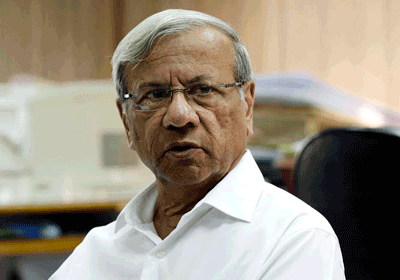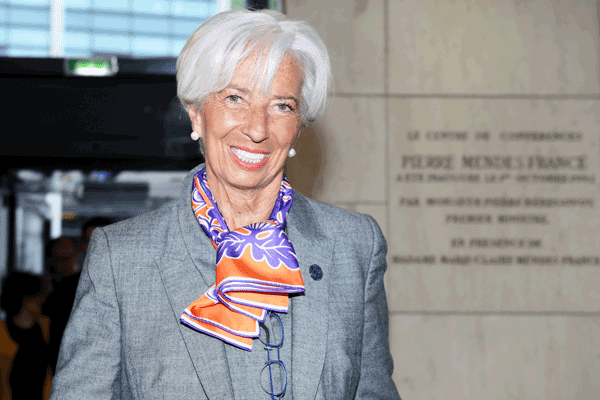The Long Leash of Loans
By Kaiser Bengali | Cover Story | Published 6 years ago

Kaiser Bengali is an economist.
Pakistan is back at the International Monetary Fund’s (IMF’s) door. Like any banker extending loans to a business, the IMF seeks to ensure the security of its capital. And just as any banker would examine the balance sheet and profit-and-loss accounts of a customer, and require an improvement in asset-to-liability ratios before extending a loan, the IMF too assesses a country’s finances. If there are weaknesses, it suggests remedial measures. These remedial measures are agreed upon mutually, between the IMF and the concerned country. The agreed provisions then become conditions. Notably, it is a country that approaches the IMF for a loan, and not the other way round.
The IMF has two basic conditions: that the (foreign exchange) current account balance and the (rupee) fiscal balance be ‘healthy’ and deficits, if any, be within limits. The first creates a dollar gap and the second a rupee gap. The dollar gap essentially occurs as a result of the excess of imports over exports; the rupee gap occurs as a result of the excess of expenditure over revenues. If the applicant country can present a plan to bridge the two gaps by reducing imports, or raising exports (or both), and by reducing expenditure, or raising revenues (or both), the IMF does not have the rationale to impose any other condition. It is when the applicant does not come up with a workable plan that the IMF presents, and imposes, its own agenda.

Christine Lagarde, the Managing Director of the IMF.
This is not to say that the IMF is entirely benign. It is part of the international financial system, which is controlled by western powers and the system is a tool for promoting their global agenda. And, waiting in the queue, behind western governments, are western corporations eager to lap up lucrative national assets. When a country approaches the IMF, it exposes itself to western political and commercial manipulation. The more a country is in financial trouble, the greater the risk of manipulation.
Pakistan has approached the IMF more than 20 times – every five years, on average – and the current bid is the fourth in two decades. And, barring one or two occassions, no agreement has been concluded successfully; meaning that the IMF has terminated the agreement mid-stream, after the release of a few quarterly tranches, on account of non-implementation of conditions. The basic conditions in every agreement have been and are the same. That Pakistan fails, consistently, to bridge the dollar and rupee gaps is not the IMF’s fault; it is the epitome of the abject failure of the Pakistani state apparatus to manage the economy rationally over more than a quarter of a century.
The current crisis can be described as the compounding of underlying weaknesses in the economy, as a result of policies implemented in the post-2000 period. Up to 2002, for every $100 of exports, Pakistan’s imports were in the range of $120-130; in other words, the deficit was in the order of 20-30 per cent. That was manageable with inflows of remittances, some FDI (Foreign Direct Investment) and some loans. Currently, for every $100 of exports, imports are in the range of $220-230 dollars; that is to say, a deficit to the tune of 120-130 per cent. No amount of remittances or FDI can bridge this gap and heavy reliance on loans is unavoidable.
The history of foreign loans merits mention. Till the end of the 1970s and even in the early 1980s, Pakistan largely sought project loans to build economic assets, for example, the Tarbela and Mangla dams and over 100,000 miles of waterways that changed the country’s economic geography. These projects created a large stream of income, including in foreign exchange, which allowed the loans to be paid off. Notably, foreign loans were obtained only for the foreign exchange component of the project; rupee expenditures were financed out of the national budget. In the post-1990s period, the foreign loan portfolio has become more inclined towards programme financing – also known as budget support. These foreign exchange loans are used to finance rupee expenditures and create neither assets nor income flows. Resultantly, repayment becomes a net liability and new loans have to be contracted to repay past loans. The loan burden continues to balloon out of control.

With regard to the fiscal deficit, current (non-development) expenditures have continued to bloat. Pakistan privatised nearly a hundred public sector enterprises in the early 1990s, with the ostensible justification and objective of using receipts to retire debt; yet, over 80 per cent of the receipts were allocated to an increase in current expenditure. The 18th Constitutional Amendment abolished the Concurrent List and opened the way for the abolition of related ministries and divisions, to reduce current expenditures. Yet between 2010 and 2017, the average annual current expenditure grew at 10 per cent, while defence expenditure grew at 12 per cent. Given that average inflation during the period was eight per cent, real expenditures grew at two and four per cent, respectively. Such reckless profligacy in dollar and rupee expenditures has forced government after government to go to lenders on their knees and with folded hands for bailouts.
By no stretch of the imagination is the IMF a predatory organisation. Many countries have leaned on it for temporary support and have recovered. Many of them now stand tall in the comity of nations. They have used the IMF support to overcome temporary crises, but ensured that their economies are structurally sound. Pakistan has not done so and relied on all sources of external funding to ‘make hay while the booty lasts.’ The booty is now drying up and western powers appear to have marshalled the IMF as an instrument to bring Pakistan to heel.
To understand the western powers’ compulsion to bring Pakistan to heel, one has to go back to the nuclear test of 1998. It is meaningful that the military coup, bringing General (R) Pervez Musharraf to power, took place one year later. And the military regime brought in a horde of foreign-based Pakistani technocrats in the employ of global capital to take over and man the country’s economic policy-making institutions. Ably supported by a bevy of local collaborators, the regime went about implementing the “liberalisation, privatisation, globalisation” agenda with a vengeance, forcing the economy wide open to foreign imports and capital domination.
The western powers’ conceivable interest in enfeebling Pakistan can apparently be attributed to their possible assessment that Pakistan is an unstable and irresponsible state that cannot be trusted with nuclear weapons. Further, Pakistan has been seen to be obdurately resisting demobilising terrorist organisations that had been set up with the support of western powers in the 1980s. The lurking fear, despite Pakistan’s protestations of its ability to ensure the security of its nuclear assets, appears to be of nuclear weapons falling into terrorist hands.
It is meaningful, then, that the IMF granted Pakistan waivers after waivers – 13 in all – and continued funding – tranche after tranche – throughout the five-year tenure of the PML-N government. Was Pakistan being ‘loaned’ a long rope to hang itself? Is the current, more overt takeover by the IMF, an exercise in bringing closure to the larger western agenda?


